Thai Nguyen Province:
Thai Nguyen province, a province in the Central Highlands, is located in the Northeast region of Vietnam. It has its capital city, Thai Nguyen, which is 75 km away from Hanoi, the capital city. The Hanoi Capital Region includes Thai Nguyen as well.
In 2022, Thai Nguyen ranked 25th in population and 14th in Gross Regional Domestic Product (GRDP) among administrative units in Vietnam. The GRDP reached 150,195 billion Vietnamese Dong (6.3 billion USD), placing it second in the Northeastern Midland and Mountainous region and sixth in the capital region, after Hanoi, Bac Ninh, Hai Duong, Bac Giang, and Vinh Phuc. The per capita GRDP of Thai Nguyen stood at 95.1 million dong (4,161 USD), making it the top province in the Northeastern Midland and Mountainous region and within the top 12 provinces nationwide with the highest per capita GRDP. The GRDP experienced a growth rate of 6.56% in 2021.
With a GNI per capita of 12,960 USD in 2020, Thai Nguyen stands alone as the only province in the Northern Midland and Mountainous region to rank among the top 10 cities nationwide.
As of 2020, Thai Nguyen had a preliminary population of 1,307,871 people, ranking as the 25th most populous province nationwide and the third among provinces in the Northeastern Midland and Mountainous region. Over a 10-year period, the province’s population increased by 163,635 people, with an average annual growth rate of 1.36%. Based on the population and housing census conducted on April 1, 2019, an additional 21,120 people were added to the population of Thai Nguyen province by the end of 2020.
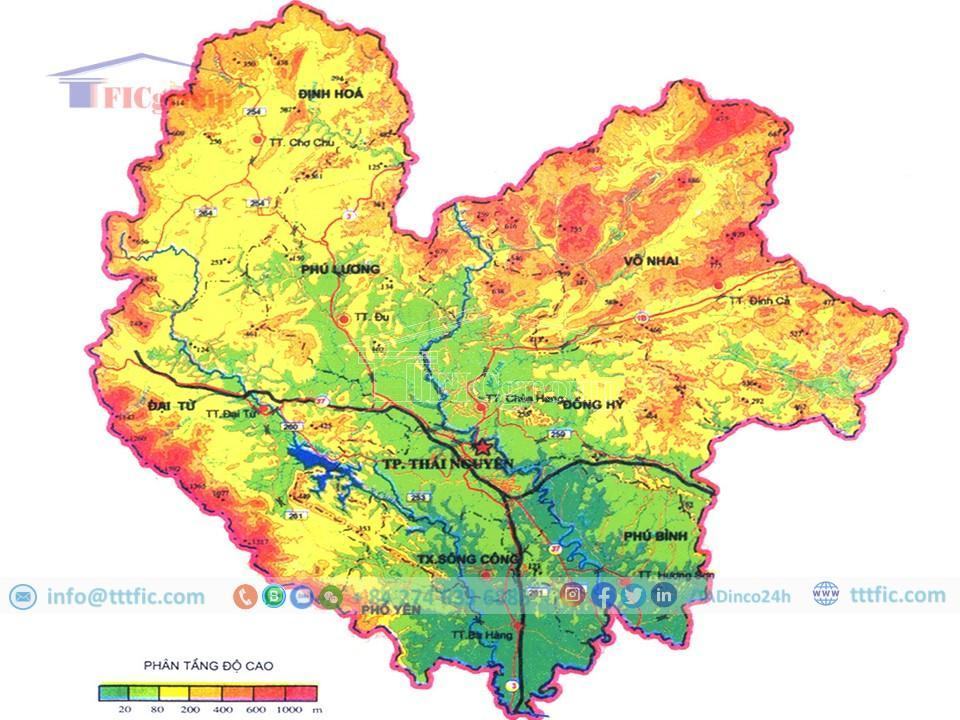
Geography of Thai Nguyen Province:
Geographical location:
Thai Nguyen province, with an area of 3,562.82 km², is situated as follows:
- To the north, it borders Bac Kan province.
- To the west, it shares borders with Vinh Phuc and Tuyen Quang provinces.
- To the east, it is adjacent to Lang Son and Bac Giang provinces.
- To the south, it is neighboring the capital city of Hanoi.
Thai Nguyen province is on average 50 km away from Noi Bai International Airport, 200 km from the Chinese border, 75 km from the center of Hanoi, and 200 km from the city center of Hai Phong. With its strategic geographical location, it serves as a significant political, economic, and educational center in the Viet Bac region specifically, and the Northeastern Midland and Mountainous region in general. Thai Nguyen acts as a gateway for economic and social interactions between the midland and mountainous region and the Red River Delta. This exchange is facilitated through a network of roads, railways, and rivers, with Thai Nguyen city being the main hub.
The extreme points of Thai Nguyen province are as follows:
- The northernmost point is located in the Tan Trao mountains, Linh Thong commune, Dinh Hoa district.
- The easternmost point is in the Lan Thung area, Phuong Giao commune, Vo Nhai district.
- The southernmost point is at Phu Loi hamlet, Thuan Thanh commune, Pho Yen city.
- The westernmost point is near the Khe Pass, Yen Lang commune, Dai Tu district.
Climate:
Thai Nguyen province lies in a subtropical humid climate zone. The winter climate is divided into three regions:
1. The northern part of Vo Nhai district is the coldest region.
2. Dinh Hoa, Phu Luong, and the southern part of Vo Nhai district form the moderately cold region.
3. Thai Nguyen city, Song Cong city, Pho Yen city, Dong Hy district, Phu Binh district, and Dai Tu district belong to the warm region.
The average temperature ranges from 21.5 to 23 °C, increasing from east to west and from north to south. The temperature difference between the hottest month (June: 28.9 °C) and the coldest month (January: 15.2 °C) is 13.7 °C. The highest recorded temperature in Thai Nguyen city is 41.5 °C, and the lowest is 3 °C. There are 1,300 to 1,750 sunshine hours per year, decreasing from east to west, and the distribution is relatively even throughout the months. There are two distinct seasons in the climate: the rainy season, which lasts from May to October, and the dry season, which occurs from October to May. The average annual rainfall is around 2,000 to 2,500 mm, with the highest in August and the lowest in January. In general, the climate of Thai Nguyen province is favorable for agriculture and forestry.
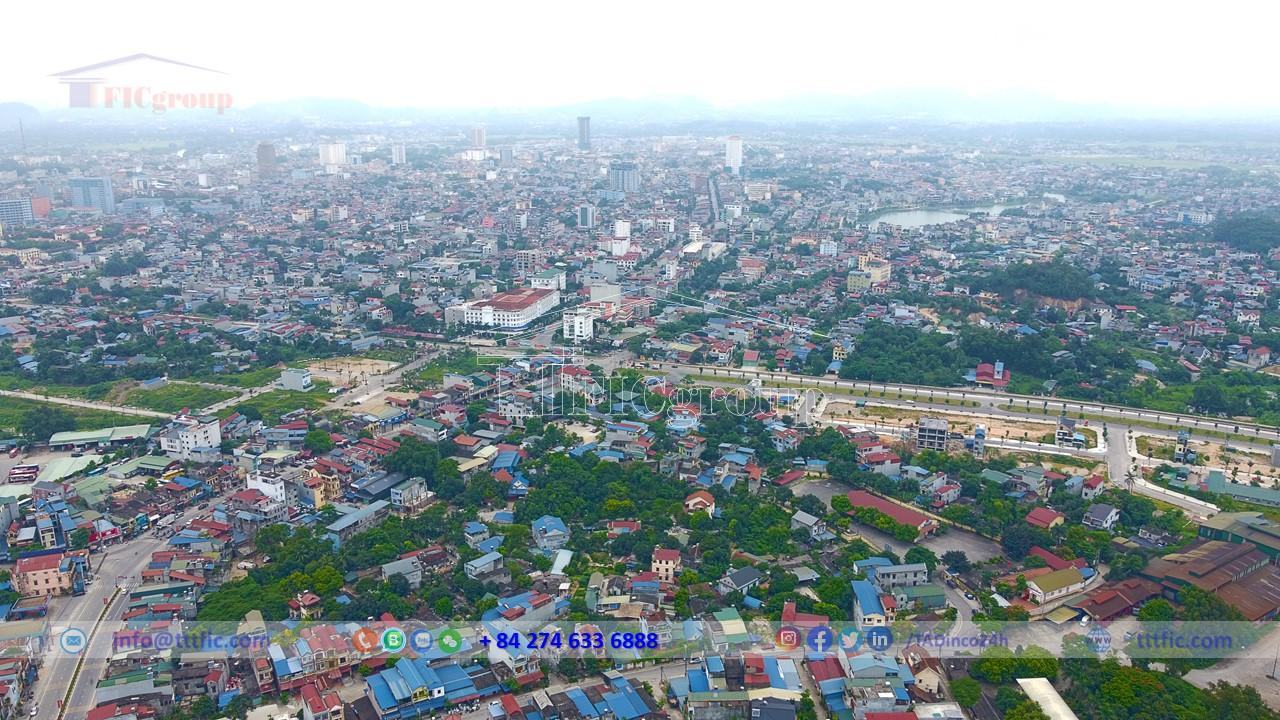
Topography:
The terrain of Thai Nguyen province comprises mainly of low hills, gradually decreasing from north to south. Hills and mountains over 100m cover two-thirds of the province, while the remaining portion is below 100m.
The mountains in Thai Nguyen are not very tall and belong to the Ngan Son and Bac Son ranges. The highest peak, reaching 1590m, is found in the Tam Dao range. The eastern slopes of the Tam Dao range, located in the southwest of Thai Nguyen province, have elevations below 1000m, then steeply decline towards the Cong River valley and Nui Coc Lake area.
In the east, the terrain ranges from 500m to 600m, primarily consisting of limestone hills with similar elevations.
Moving to the south, the terrain becomes much lower, with some low hills rising from the flat lowland areas. The southern region includes lowland and alluvial plain areas, with elevations generally below 100m.
The terrain of Thai Nguyen slopes from north to south, following the Cau River’s flow. The western bank of the Cau River slopes northwest to southeast, while the eastern bank (except for the southeast part of Vo Nhai district) slopes northeast to southwest. Thai Nguyen can be categorized into four landscape groups based on its topography:
– Flatland landscape group
– Hill landscape group
– Low mountain landscape group
– Human-made landscape group (mainly featuring large artificial lakes, with Nui Coc Lake as the largest)
Overall, Compared to other provinces in the central and northern mountainous regions, Thai Nguyen exhibits a relatively uncomplicated terrain. This simplicity provides advantages for agriculture, forestry, and overall socio-economic development compared to other provinces in the region.
Economy of Thai Nguyen Province:
The General Statistics Office has announced that Thai Nguyen province’s Gross Regional Domestic Product (GRDP) growth rate for 2022 is estimated at 8.59%, surpassing the planned target of 8%. In the agricultural, forestry, and fisheries sector, there was a 4.23% increase, contributing 0.41 percentage points to the overall growth. The industrial and construction sector experienced a growth rate of 9.75%, contributing 6.15 percentage points. The service and non-subsidized product tax sector saw a growth rate of 7.35%, contributing 2.03 percentage points. These results indicate the effectiveness of the government’s economic and social recovery and development policies.
In terms of quarterly GRDP growth in 2022, the agricultural sector grew by 3.97%, the forestry sector grew by 6.81%, and the fisheries sector grew by 6.63%. In the industrial and construction sector, the processing and manufacturing industry grew by 10.81%, electricity production and distribution grew by 4.93%, water supply and waste management grew by 12.77%, and the construction sector grew by 6.95%. The service sector experienced a strong recovery, with a growth rate of 12.82% in the third quarter.
The economic structure of Thai Nguyen province continued to shift positively, with the industry and construction sector accounting for 59.51%, the service and non-subsidized product tax sector accounting for 30.03%, and the agricultural, forestry, and fisheries sector accounting for 10.46%.
Per capita GRDP showed an upward trend, with an increase of 12.5% in Vietnamese Dong and 12% in US dollars compared to 2021. The per capita GRDP in 2022 reached 107 million VND/person/year and 4,575 USD/person/year, respectively.
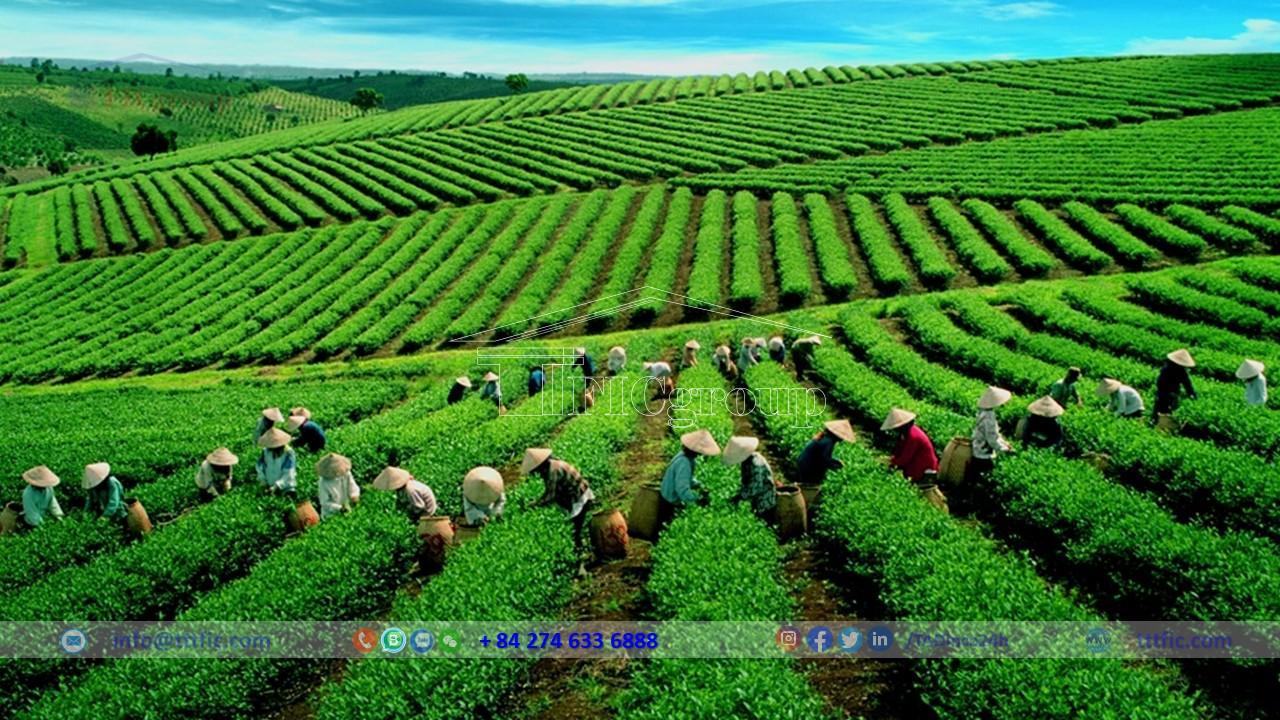
Agriculture, forestry, aquaculture:
Agriculture:
Crop:
In 2022, the cultivated area decreased by 0.9%, totaling 111 thousand hectares. The Winter-Spring crop covered 59.9 thousand hectares, down by 0.7%, while the Summer-Autumn crop covered 51.1 thousand hectares, down by 1.2%.
Despite rice achieving a yield of 56.01 tons per hectare, exceeding the plan by 102.8% and increasing by 0.3% compared to 2021, the total grain crop yield decreased to 457.5 thousand tons due to reduced cultivated area. However, it reached 104.7% of the target. Other crops showed mixed results, with vegetable production reaching nearly 282.7 thousand tons, surpassing the plan by 105.6% and increasing by 5.5%. Some crops like cassava, sweet potatoes, and soybeans had decreased yields due to reduced cultivation.
Key perennial crops in the province, such as bananas, lychees, and mulberries, had high yields. Banana production reached nearly 8.2 thousand tons, up by 17.5%; lychee production reached nearly 10.3 thousand tons, up by 11.9%; and silk production reached nearly 6.8 thousand tons, up by 9.7%.
Tea cultivation in 2022 covered 22.24 thousand hectares, a decrease of 0.9%. New and replanted tea accounted for 416.7 hectares, down by 8.5%, while productive tea covered 20.8 thousand hectares, up by 1.4%. Efforts are being made to develop sustainable tea cultivation methods with high yields and quality.
Unfavorable weather conditions in the 2022-2023 Winter crop affected crop growth, particularly vegetables, necessitating multiple replantings. The total cultivated area for key crops reached around 11.5 thousand hectares, down by 1.4%. Corn covered 3.7 thousand hectares, achieving 92.8% of the plan, a decrease of 2.8%. Vegetable crops covered nearly 6.2 thousand hectares, reaching 93.6% of the plan, down by 0.3%. Sweet potatoes covered nearly 1.5 thousand hectares, down by 2.0%, while soybeans covered 13 hectares, down by 7.1%, and peanuts covered 76 hectares, down by 5.0%.
Breed:
Despite the challenges posed by Covid-19 and livestock diseases, the livestock sector in the province showed positive development in 2022. Livestock prices remained high, while feed costs continued to increase, leading to higher production expenses. However, effective disease control measures and a stable market demand contributed to the sector’s growth.
Land use purposes have primarily shifted in Pho Yen City and Song Cong City.
As of October 1, 2022, the overall number of livestock and poultry increased compared to 2021, except for a slight decrease in chickens. Buffalo population reached over 45.5 thousand, a 5.3% increase; cattle population reached nearly 52.8 thousand, a 13.7% increase; pig population reached over 606.7 thousand, a 7.4% increase; and poultry population reached over 15.3 million, a 0.1% increase (including nearly 14.3 million chickens, a 1.3% decrease). The proportion of pigs in farms decreased by 0.5% compared to the previous year, while the proportion of chickens increased by 1.4%.
In the fourth quarter of 2022, the estimated slaughter meat output increased by 5.5% compared to the same period last year. Pork production reached nearly 26.4 thousand tons, a 1.7% increase; poultry meat production reached 32.6 thousand tons, a 9.2% increase; buffalo meat production reached over 1.5 thousand tons, a 0.1% increase; and beef production reached nearly 1.9 thousand tons, a 2.5% increase.
The total slaughtered meat output in 2022 is estimated to reach 212.84 thousand tons, a 7.2% increase compared to the same period last year, achieving 134.7% of the plan. Pork production is estimated at 96.55 thousand tons, a 1.6% increase; chicken meat production is estimated at 93.46 thousand tons, a 14.4% increase; buffalo meat production is estimated at 5.5 thousand tons, a 3.8% increase; and beef production is estimated at 6.56 thousand tons, a 6.5% increase.
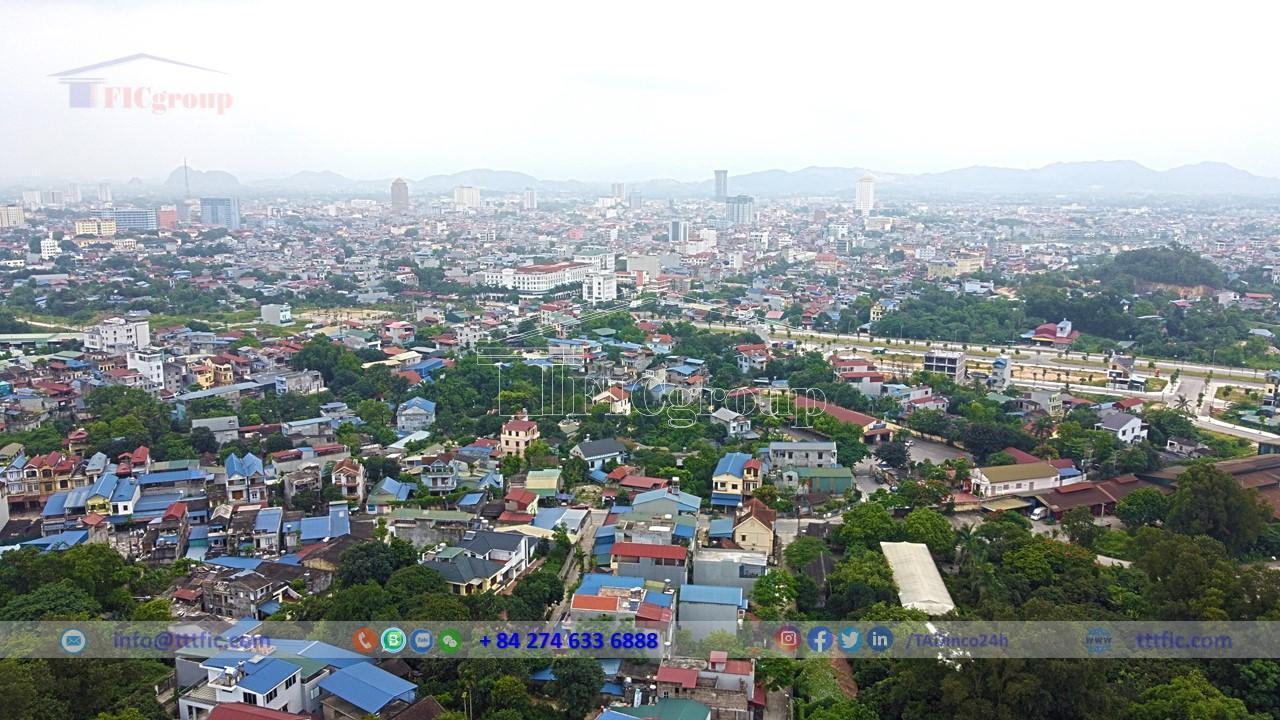
Forestry:
The forestry sector prioritized nurturing planted forests and guiding nurseries to actively prepare forestry seeds for proper forest planting in 2022. The total forest plantation area in the province reached 4,163.1 hectares, surpassing the plan by 112.5%. Timber extraction volume from planted forests increased by 6.3% to an estimated 255 thousand cubic meters, while firewood extraction volume decreased by 1.9% to 258 thousand steres compared to 2021.
Efforts in forest fire prevention and control were strengthened as local residents living near forested areas demonstrated heightened awareness and adherence to forest fire prevention regulations. From January 1 to December 15, 2022, there were 4 forest fire incidents, resulting in approximately 1.14 hectares of forest area damage, and 2 cases of forest destruction in Dong Hy district, causing damage to 1.65 hectares. Furthermore, 97 violations of the Forestry Law were identified and addressed, leading to the confiscation of 107.1 cubic meters of various timber types and a contribution of over 640.3 million Vietnamese dong to the state budget.
Aquaculture:
Positive developments were observed in the aquaculture production in the province in 2022, with a significant shift towards intensive and high-value aquaculture and the establishment of concentrated aquaculture areas in Phu Binh, Dai Tu, and Dinh Hoa districts through cooperative and collective farming models.
In the fourth quarter of 2022, the total aquaculture output reached nearly 5.8 thousand tons, a 39.8% increase compared to the previous quarter and a 9.9% increase compared to the same period last year. The main contribution came from cultivated aquatic species, particularly fish, accounting for over 5.5 thousand tons (96.1% of the total quarterly output), showing a 39.6% increase from the previous quarter and a 10.1% increase from the same period in 2021.
Overall, the annual aquaculture output in the province for 2022 is estimated to reach 17.2 thousand tons, achieving 101.4% of the plan and increasing by 8.9% compared to 2021. Favorable weather conditions throughout the year resulted in abundant fish populations in rivers and natural lakes, leading to an estimated harvest of 325 tons, a 5.6% increase compared to the previous year. The estimated cultivated aquaculture output is 16.9 thousand tons, indicating a 9% increase compared to 2021.
Industry:
In 2022, the province’s industrial production index increased by 10.8% compared to the previous period. Processing and manufacturing sectors rose by 11.2%, while the electricity, gas, steam, and air conditioning supply sector grew by 5%. Water supply, waste management, and waste treatment saw a 9.3% increase, while the mining and quarrying sector experienced a 17.5% decrease.
Notably, several key industrial products showed significant growth during the same period. Other types of headphones reached 77.8 million units, surging by 68.3%. The textile and garment products reached about 100.4 million units, rising by 23.2%. Surveillance cameras reached 82.3 million units, marking an 18.6% increase. Commercial water supply volume reached 33.7 million cubic meters, rising by 10.2%. Additionally, products made from wolfram and wolfram alloys reached 19,000 tons, with an 8.4% increase.
On the other hand, certain product groups experienced a decline in production during the same period. Ceramic bricks for construction reached 57.4 million pieces, showing a 1% decrease. Other types of steel reached 1.4 million tons, declining by 2.9%. Tablet computers reached 8.7 million units, showing a 9.5% decrease. Moreover, refined copper and copper cores reached 37.8 thousand tons, with a notable decrease of 20.2%.
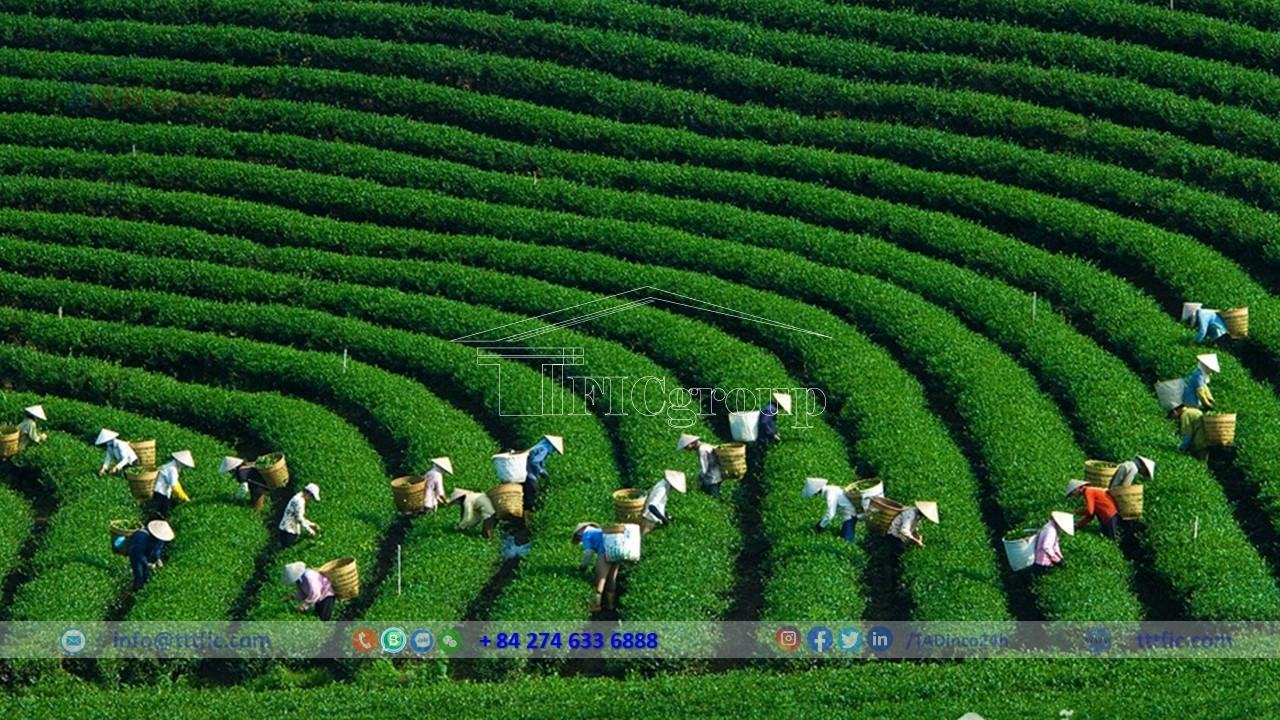
Residential:
Thai Nguyen province, as of April 1, 2019, had a population of 1,286,751, with 629,197 males and 657,554 females. The urban population accounted for 31.9% (410,267 people), while the rural population constituted 68.1% (876,484 people). The natural population growth rate in 2019 was 1.36%. Thai Nguyen ranked 18th in urban population proportion nationwide and first among the Northern Midlands and Mountainous provinces, second only to the Capital Region (Hanoi). Its urbanization rate in 2023 stands at 41.73%. The province is predominantly inhabited by the Kinh ethnic group (73.1%), who settled in the southern part of Thai Nguyen. They migrated from the Red River Delta and Thanh Hoa provinces during the Tran, Le, and Nguyen dynasties. The Kinh population increased during the French colonial period, the resistance war against France, and the post-1954 period due to industrial projects. The Kinh community still preserves traditional customs from their southern ancestors. Thai Nguyen experienced a higher population growth rate compared to the national average and the previous decade, mainly due to migration for employment in foreign-invested enterprises. Population distribution in the province is uneven, with lower densities in highland and mountainous areas and higher densities in urban and delta regions. Vo Nhai district has the lowest population density, while Thai Nguyen city has the highest.
The ethnic minorities
The ethnic minorities in Thai Nguyen province are diverse and have unique cultural identities. The Tày people, with a population of 106,238 (10.15% of the province’s population), are present in all districts and cities, concentrated mainly in Định Hoá, Phú Lương, Đại Từ, and Võ Nhai. The Nùng people have a long history in Vietnam, and some groups have assimilated into the Tày community. The Hoa people, of Chinese origin, settled in Thai Nguyen about 150 years ago, coming from Guangdong and Guangxi provinces. They were either impoverished farmers or descendants of warriors who fled China.
In the 1960s and 1970s, additional Hoa immigrants arrived from Hạ Cối, Quảng Ninh. The Ngái people, with 422 individuals, live scattered across Đại Từ, Thai Nguyen city, Phổ Yên, and other areas. They coexist with the Kinh, Tày, Hoa, and Sán Dìu communities. The Sán Dìu people, also known as Sán Dao, are classified as a Hán ethnic group. The Dao people in Thai Nguyen belong to three local groups: Dao Đỏ, Dao Quần Chẹt, and Dao Lô Gang, residing in different districts. The H’Mông population in Thai Nguyen grew from 650 in 1979 to 4,831 in 1999, with the majority concentrated in Võ Nhai and Đồng Hỷ. Lastly, the Sán Chay people consist of two groups: Cao Lan and Sán Chí, who migrated to Vietnam a few hundred years ago. The Cao Lan community frequently changes their residence every three years.








